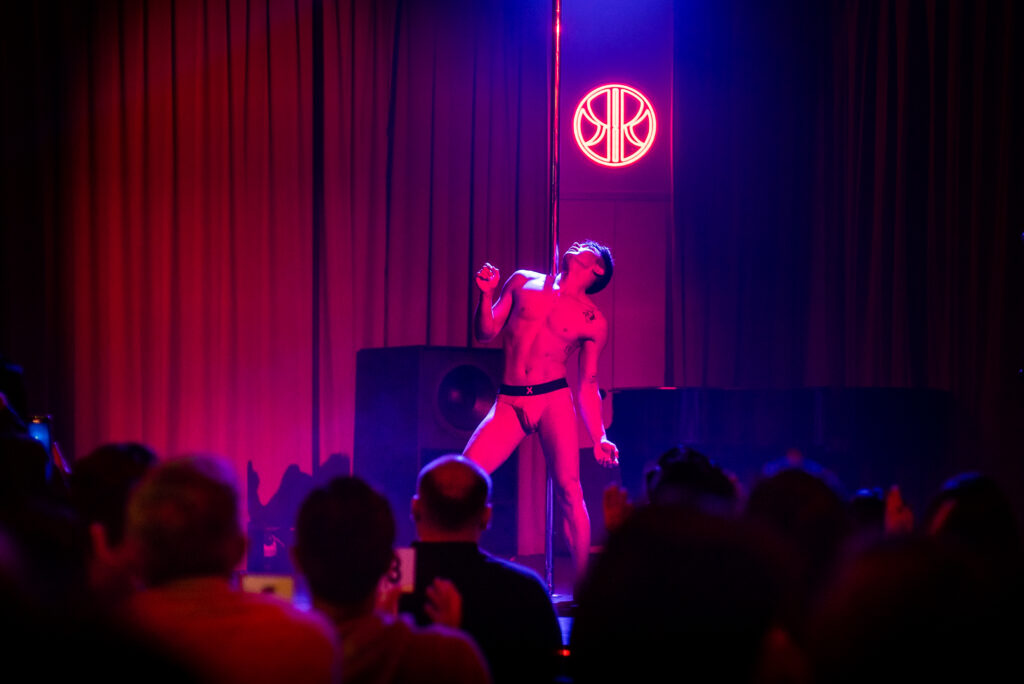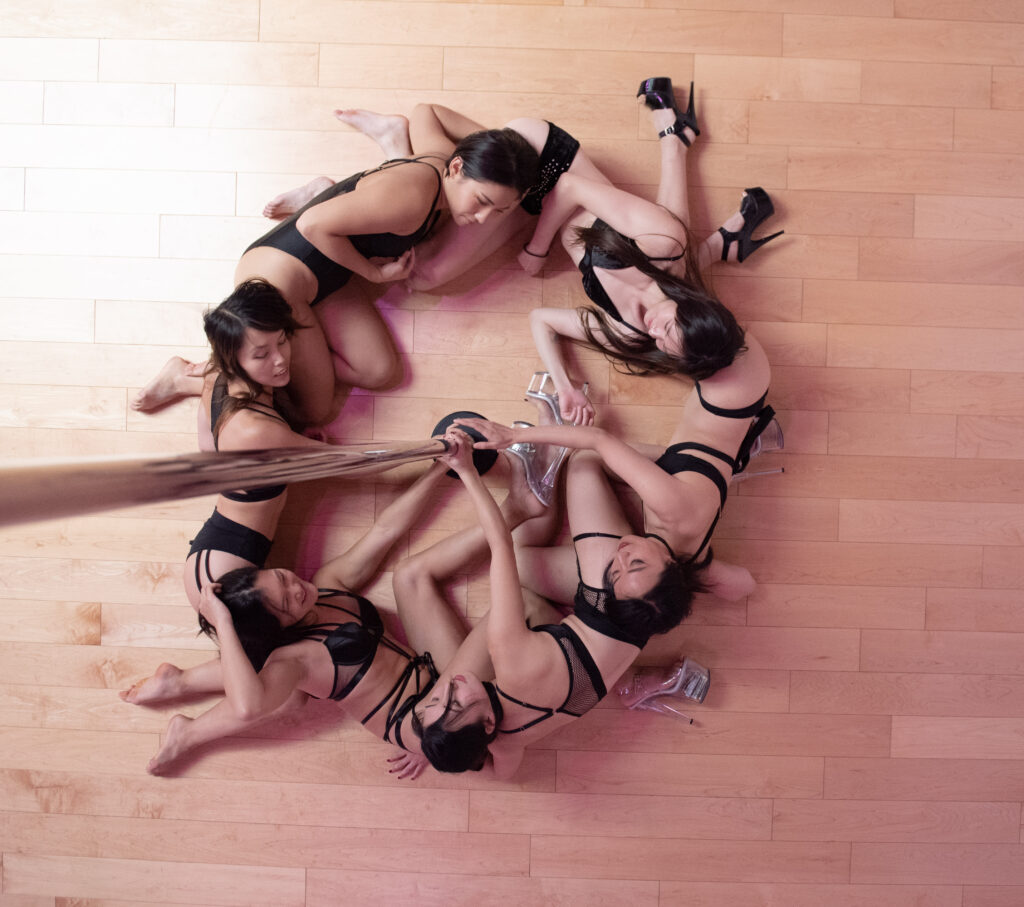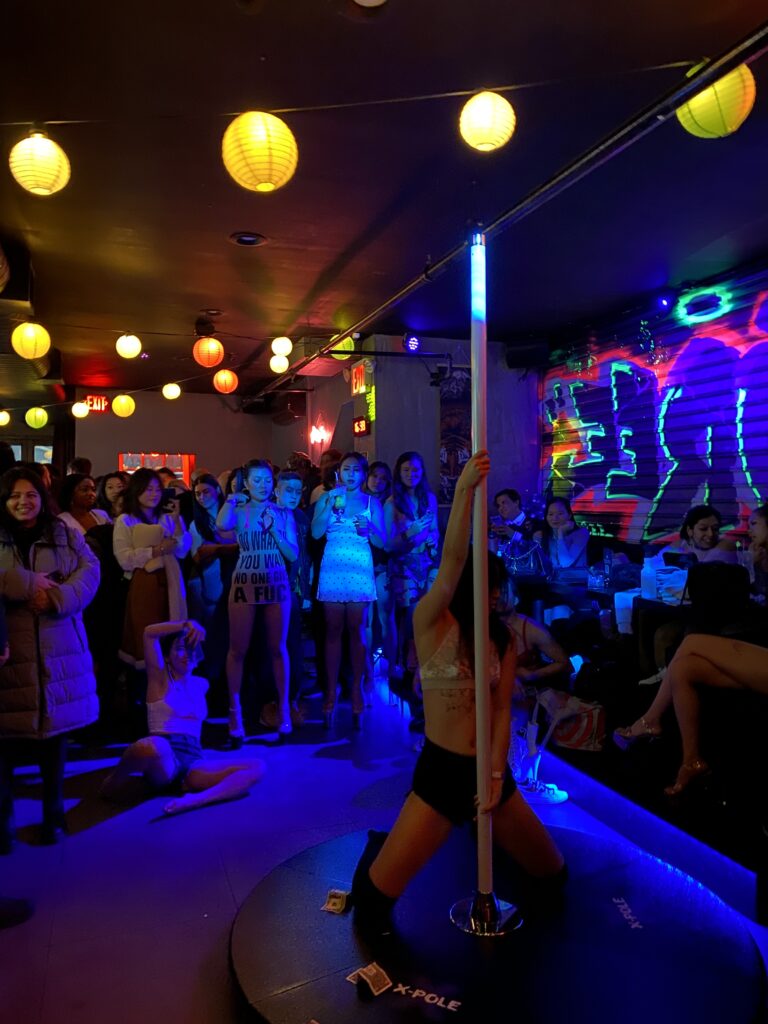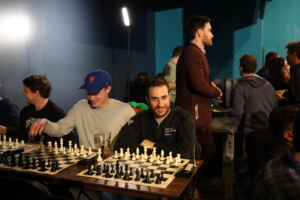Ai Nguyen started small. Last year, she decided to go full time as a performing artist and went on Facebook to see if others were also interested in joining a group for Asian pole dancers, but had only received six likes. But after she organized a photoshoot with a few of her Asian friends and started organizing a pole showcase at her studio, people started lining up.
Now, Nguyen runs a group called Subtle Asian Polers, a community of Asian pole dancers that she says create a space for an underrepresented group in the pole dancing scene to express themselves. Members of the group regularly perform showcases at clubs like like House of Yes and the Red Pavilion.
Originally from San Jose, Nguyen says she missed her hometown’s substantial Asian-American population. “I was so used to having that Asian community, and here [in New York], I felt like it was harder for me to find that.”
“I was just trying to find more Asians who pole danced and did aerial dancing,” adds Nguyen.
Her own path pole-dancing was not straightforward. Self-taught throughout childhood, she recalls imitating K-pop dances as a young girl. In high school, she began taking after school dance classes behind her parents’ back and soon began posting these on YouTube. She says that her dance videos even reached minor success as a YouTube sensation, though they are not online anymore, though she says she eventually landed an offer from YouTube’s corporate office.
But after college, she felt the pressure to give up dancing. “I was told that I was supposed to have a regular job, so I paused dancing for a while,” she says.
Instead of dancing, Nguyen worked as a board certified behavior analyst, specializing in children with mental and behavioral disabilities. During the pandemic, Ngyuen considered returning to dancing full-time, after she was gifted a pole by an ex-boyfriend for her apartment.
“My mom cried for two days straight,” Nguyen said about her family’s reaction to her latest pivot.


The group she later founded is “not just about showcases and performing; it’s also about helping to jumpstart careers for Asians who want to be artists but struggled like me [but]whose families don’t want them to go down this path,” she says.
Subtle Asian Polers currently has around 100 active members. Many of the long standing members were introduced to the group through Nguyen’s pole classes at Foxy Fitness and Pole. Among its various activities, the group regularly holds jam sessions that gives the performers the chance to practice and creatively experiment.
Gracie Le, pole dancer and part-time performer, who is also part of the group, say she finds this inspiring.
“The connectedness and the consistent support through learning tricks and flows made me feel understood and stronger, not just physically but also mentally,” Le said.
Cultural identity is another bonding force within the group. Gigi, a pole dancer who trains regularly with Nguyen, said the group allows her to connect with her Asian identity.
“I’m really proud of being Asian, so I draw a lot of inspiration from Asian music and stories in my performances. This community has really helped me find support, creative partners and a safe space to explore that.”
Subtle Asian Polers is also a force of community in the competitive nightlife scene in New York City. “Paid gigs are competitive, and pole dancers are often limited to studio showcases when they start performing. AAPI performers are also underrepresented in NYC nightlife, so it’s been incredible to see Subtle Asian Polers not only give us more opportunities to perform but also ones that allow us to highlight our culture,” said Grace Zhao, a part time pole dancer and member of the group.
The social stigma surrounding pole dancing remains an obstacle for the group. The origins of pole dancing come from the world of sex work and stripping, a long lineage of women who earn money through their expressions of sexuality.
Nguyen admitted that she has to be selective about where they perform.


Aside from the technical challenges of installing a pole, the values are also important. “Even though I’m more on the artistic side, for a venue owner to accept pole [dancing] into their venue, they have to be sex-work positive, or else you’re wasting your time,” she says.
In Bushwick, outside of the Red Pavilion and House of Yes, the group also regularly host some of its jams and workshops at Nook, the coffee shop on Irving Avenue.
Prejudice against pole dancing became more apparent to Nguyen
when she launched Subtle Asian Aerialists. While pole dancing is exclusive to the pole as an apparatus, aerial work includes any form of acrobatics performed on a hanging apparatus and the group’s performers also work out of silks, hammocks, and lyra, which is a type of hoop shaped metal apparatus.
Nguyen says she noticed that people’s attitude towards aerial work versus pole dancing is considerably different. The simple presence of a metal pole in the back of a picture can result in a photo getting taken down on social media. This is partially why she says her group also focuses on marketing to aerialists too, which lets her expand the brand by circumventing the challenges of advertising pole dancing online.
But Nguyen also says she thinks it’s also important to acknowledge pole’s origin in stripping, a sticking point between some pole dancers and activists in the sex worker space who say it poses some kind of harm to professional strippers. She says she plans to host a Q&A workshop with someone in the sex-work industry, soon.
“I think it’s important to support the stripping community, and we can do that by going to the clubs and throwing money,” she says.
Top image taken by Jing Ma.
For more news, sign up for Bushwick Daily’s newsletter.
Join the fight to save local journalism by becoming a paid subscriber.


